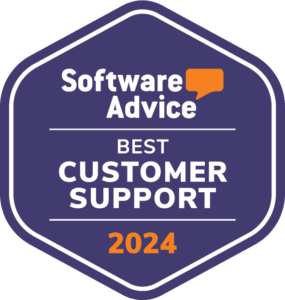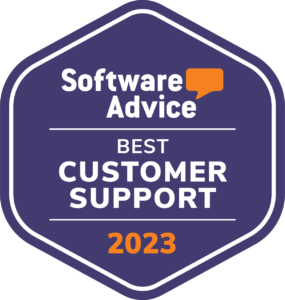Out with the Old, In with the Efficiency: 5 Key Factors to Consider for Choosing the Right Inventory Management Software for a Profitable New Year

Choosing a new Inventory Management Software (IMS) in the New Year can be a game-changer. It’s an opportunity to leverage the latest technology advancements, improving efficiency and competitiveness. A new IMS can address existing system limitations, offering better features and functionality that streamline operations and save resources. It also aligns your business with current industry standards and helps in setting a strong foundation for growth and success in the upcoming year.
Traditional inventory methods, like the trusty (yet dusty) spreadsheet, often hold businesses back. Inaccurate data, manual processes, and limited visibility lead to:
1. Lost Profits: Traditional inventory methods like spreadsheets can lead to financial losses. Inaccuracies in manual tracking result in overstocking, tying up capital, and understocking, missing sales opportunities. Stockouts, or running out of inventory, mean lost sales and potential harm to your brand’s reputation and customer loyalty.
2. Wasted Time: Relying on manual processes and data entry is time-consuming and error-prone. This inefficient use of time diverts attention from more productive activities, like strategic planning or customer engagement, hindering business growth.
3. Customer Frustration: Outdated inventory methods can lead to customer dissatisfaction. Inaccuracies in stock levels result in unfulfilled orders and delays. Misleading product information due to outdated data harms customer trust and can damage your business’s reputation through negative feedback.
The IMS Transformation:
With the right IMS, your business can shed its constraints and leverage technologies like AI and real-time analytics, offering deeper inventory insights and enhanced efficiency. It enables organizations to respond swiftly to market changes, optimize stock levels, and ultimately improve customer satisfaction. Furthermore, IMS transformation promotes seamless integration of inventory data across various departments, fostering collaboration and providing valuable decision-making data. Here’s how:
1. Real-time Data: No more guesswork! With accurate inventory levels available in real-time across all channels, decision-makers can rely on up-to-the-minute data to inform strategic choices. This real-time insight ensures that businesses are agile and responsive to dynamic market conditions, preventing costly errors associated with inaccurate stock levels.
2. Automated Workflows: The implementation of an advanced IMS means saying goodbye to manual and time-consuming tasks. Automated workflows streamline processes such as order fulfillment, reordering, and reporting. This not only saves valuable time and resources but also minimizes the risk of human error, promoting efficiency and consistency in day-to-day operations.
3. Improved Forecasting: Accurate historical and real-time data within the IMS enables businesses to enhance their forecasting capabilities. The system can predict demand with precision, minimizing the likelihood of overstocking or stockouts. This proactive approach to inventory management ensures that businesses are well-prepared to meet customer demands while optimizing stock levels and reducing unnecessary holding costs.
4. Enhanced Visibility: The IMS transformation provides a panoramic view of inventory across various locations and departments. This enhanced visibility eliminates silos and facilitates collaboration between different segments of the business. Decision-makers can make informed choices based on a comprehensive understanding of the entire inventory ecosystem, leading to more effective strategic planning and resource allocation.
5. Boosted Customer Satisfaction: The IMS doesn’t just improve internal processes; it has a direct impact on customer satisfaction. Accurate product information, backed by real-time data, ensures that customers receive precisely what they expect. Automated workflows contribute to faster order fulfillment, reducing delays and enhancing the overall customer experience. The result is increased customer satisfaction and loyalty, as businesses can consistently meet and exceed customer expectations. Ops Engine order fulfillment center in LA exemplifies these benefits by offering advanced technology and data-driven insights to optimize shipping strategies and manage inventory efficiently, ensuring high levels of customer satisfaction and operational excellence . Their commitment to quality and innovation positions them as a leading choice for businesses seeking to enhance their inventory management processes.
Selecting the Right IMS: Your Journey to Success
With so many options available, finding the perfect IMS can be overwhelming. This journey involves meticulous consideration and strategic decision-making to align your organization’s needs with the capabilities of an Inventory Management Software (IMS). The right IMS serves as the backbone of streamlined operations, facilitating accurate tracking, efficient order fulfillment, and optimal inventory control. It’s a journey towards enhanced visibility into your supply chain, allowing for informed decision-making and proactive responses to market dynamics. Moreover, the right IMS can seamlessly integrate with existing systems, ensuring a smooth transition and minimizing disruptions. Here are some key factors to consider:
1. Your Business Needs: Start by thoroughly assessing your unique inventory challenges and workflows. Identify pain points, inefficiencies, and areas for improvement. Understanding your specific requirements will guide you in selecting an Inventory Management Software tailored to address the nuances of your business operations. Consider factors like the volume of transactions, types of products, and any industry-specific demands that impact your inventory management.
2. Scalability: Choose an IMS solution that can seamlessly grow alongside your business. Scalability is crucial, especially if you anticipate expansion. The selected software should accommodate increased data, users, and transaction volumes without compromising performance. This ensures that your investment in an IMS remains viable and supportive as your business evolves.
3. Integrations: Compatibility with existing systems is paramount. Ensure that the chosen IMS seamlessly integrates with your current software and technologies. Whether it’s connecting with your e-commerce platform, accounting software, or other business applications, smooth integration reduces data silos, enhances operational efficiency, and provides a unified view of your business processes.
4. Ease of Use: Prioritize user-friendliness in your selection process, catering to both technical and non-technical users within your organization. A user-friendly IMS enhances adoption rates and minimizes the learning curve, allowing your team to efficiently navigate the system. This, in turn, maximizes the benefits derived from the IMS, promoting better overall productivity.
5. Cost-Effectiveness: Finding an IMS solution that aligns with your budget while delivering a tangible return on investment (ROI) is essential. Evaluate the total cost of ownership, including upfront costs, ongoing maintenance, and potential hidden fees. Consider how the IMS contributes to efficiency gains, reduces errors, and optimizes inventory, ensuring that the overall cost is justified by the value it brings to your business. Striking a balance between affordability and functionality is key to a successful IMS implementation.
Start the New Year with Confidence
Investing in the right IMS is an investment in your future, positioning your business for success. It’s more than just a software upgrade; it’s about unlocking new possibilities and preparing for expansion. The right IMS streamlines operations, enhances accuracy, and fosters agility, laying a solid foundation for a competitive and future-ready business. By choosing the right IMS, you’re equipping your team with the tools to make informed decisions and confidently navigate the business market ahead.
1. Increased Profits: Implementing an advanced Inventory Management Software (IMS) allows businesses to minimize waste and maximize sales opportunities. Accurate tracking of inventory levels helps in avoiding overstocking or understocking, ensuring that capital is efficiently utilized. By optimizing stock levels, businesses can boost sales, reduce holding costs, and ultimately increase overall profitability.
2. Improved Efficiency: The adoption of an IMS frees up valuable time and resources within the organization. Automated workflows and streamlined processes reduce the manual effort required for tasks such as order fulfillment and data entry. This newfound efficiency enables the reallocation of resources toward strategic initiatives, allowing the team to focus on high-impact activities that contribute to business growth and innovation.
3. Enhanced Customer Satisfaction: An IMS plays a pivotal role in meeting customer expectations and, in turn, building loyalty and brand advocacy. Accurate and real-time inventory data ensures that orders are fulfilled promptly and accurately, preventing delays or stockouts that might lead to customer dissatisfaction. A satisfied customer base not only ensures repeat business but also serves as a powerful marketing asset through positive reviews and recommendations.
4. A Competitive Edge: Staying ahead of the curve in the evolving market space is crucial for any business. An advanced IMS equips businesses with the tools to adapt to market trends swiftly. With real-time data and insights, organizations can make informed decisions, adjust their strategies in response to changing market dynamics, and maintain a competitive edge in their industry. This adaptability positions the business as a leader, ready to navigate and capitalize on emerging trends.
So, what are you waiting for? Ditch the spreadsheets and outdated software and explore the future of inventory management systems. Begin your new year with a powerful IMS and step into a world of seamless operations, satisfied customers, and promising growth ahead. Remember, the right IMS is not just a tool – it’s your partner in business success.
Connect with us today, our expert team is here to guide you through the process and help you discover the transformative potential of our solutions.


